| The Alert Police:
East Germany’s Original Army
By Mike Bennighof, Ph.D.
December 2021
Founded in October 1949, the German Democratic Republic initially served as an extension of the Soviet military occupation regime in East Germany. In 1954 it would, at least on paper, gain full control of internal and foreign affairs including the right to decide its own relationship with the German Federal Republic, West Germany. What existed on paper and what existed in reality were rarely the same thing.
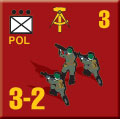 So it was with the East German armed forces as well. East Germany initially had no army, but did have a national police force, the Volkspolizei (People’s Police). The Soviet military occupation authorities began forming paramilitary police units a full year before the declaration of the German Democratic Republic, building the force around the “Action 5,000” a group of 4,774 former German prisoners of war held in the Soviet Union who had been indoctrinated with proper Communist ideals. To lead them, the GSFG detailed five former Wehrmacht generals and 100 officers of other ranks who had been active during the Great Patriotic War in the Anti-Fascist Committee for a Free Germany (NKFD), an organization of German officers dedicated to the overthrow of Adolf Hitler, and had proper Communist credentials. So it was with the East German armed forces as well. East Germany initially had no army, but did have a national police force, the Volkspolizei (People’s Police). The Soviet military occupation authorities began forming paramilitary police units a full year before the declaration of the German Democratic Republic, building the force around the “Action 5,000” a group of 4,774 former German prisoners of war held in the Soviet Union who had been indoctrinated with proper Communist ideals. To lead them, the GSFG detailed five former Wehrmacht generals and 100 officers of other ranks who had been active during the Great Patriotic War in the Anti-Fascist Committee for a Free Germany (NKFD), an organization of German officers dedicated to the overthrow of Adolf Hitler, and had proper Communist credentials.
The Alert Police continued to expand, with most of the new recruits placed in training units which lived in barracks and studied military tactics and theory – but did not engage in actual field training. Formations included artillery, engineer and armored schools. Small naval and air units also formed and began training. The Soviet command in Germany intended that the Alert Police serve as the cadre for a future East German army, but politically the Soviets did not want to make such a move until West Germany re-armed first.
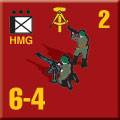 Within a few months the Alert Police numbered 10,000 rank-and-file and 600 officers, all of them carefully screened for proper working-class consciousness and Communist zeal. Within a year the strength of the Action Police had climbed to 25,600, with officer candidates undergoing advanced training in the Soviet Union. After the initial intake of the Action 5,000 the proportion of returned prisoners of war dropped significantly (since the most dedicated Communists had already been carefully selected), but the former prisoners had an inordinate amount of influence on their comrades and received preference in promotions. Within a few months the Alert Police numbered 10,000 rank-and-file and 600 officers, all of them carefully screened for proper working-class consciousness and Communist zeal. Within a year the strength of the Action Police had climbed to 25,600, with officer candidates undergoing advanced training in the Soviet Union. After the initial intake of the Action 5,000 the proportion of returned prisoners of war dropped significantly (since the most dedicated Communists had already been carefully selected), but the former prisoners had an inordinate amount of influence on their comrades and received preference in promotions.
Initially the Alert Police received the ultimate cast-offs of the Group of Soviet Forces in Germany, the Soviet occupation command. Former Czech, Polish and Yugoslav Mauser rifles once seized by the German Wehrmacht armed the cadres, along with a handful of machine guns and mortars of equally convoluted origins.
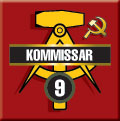 By early 1950, the training and indoctrination began to point even more strongly toward the role of the Action Police as a clandestine army. The police finally left their barracks and began field exercises, though they did not take their weapons back to the barracks afterwards – these remained at the training grounds under lock and key, watched over by Soviet soldiers. By early 1950, the training and indoctrination began to point even more strongly toward the role of the Action Police as a clandestine army. The police finally left their barracks and began field exercises, though they did not take their weapons back to the barracks afterwards – these remained at the training grounds under lock and key, watched over by Soviet soldiers.
Briefing materials now spoke of the force’s role as opposition to the “Imperialism of the USA and its Henchmen.” The Action Police also began to forge close ties with the Free German Youth (Freie Deutsche Jugend, or FDJ), the East German equivalent of the Soviet Komsomol youth movement officially described as the “fighting reserve of the Socialist Unity Party (the East German Communist Party).” FDJ members now graduated into the Action Police, and FDJ units trained alongside the police.
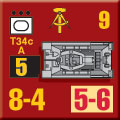 As war loomed in Korea, the Action Police began to receive better, and heavier, weaponry: 15 T-34/76 tanks and several dozen each of Ba64 armored cars and SU76 self-propelled guns out of Soviet stocks, plus first-line former Wehrmacht weaponry like 75mm PaK40 anti-tank guns and 105mm howitzers. They also received better rifles, machine guns and mortars (almost all of them former Wehrmacht weapons) and became fully motorized. They remained in nothing larger than battalion-sized units, and likely would have performed rear-area security in case of an actual shooting war with the West. As war loomed in Korea, the Action Police began to receive better, and heavier, weaponry: 15 T-34/76 tanks and several dozen each of Ba64 armored cars and SU76 self-propelled guns out of Soviet stocks, plus first-line former Wehrmacht weaponry like 75mm PaK40 anti-tank guns and 105mm howitzers. They also received better rifles, machine guns and mortars (almost all of them former Wehrmacht weapons) and became fully motorized. They remained in nothing larger than battalion-sized units, and likely would have performed rear-area security in case of an actual shooting war with the West.
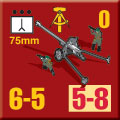 Our Panzer Grenadier: National People's Army presents the East German Action Police in Panzer Grenadier format, for use with our Iron Curtain series of game supplements. The East German forces are not very good, but they are present in new scenarios to try to halt the invasion of the American imperialists. Their morale is usually surprisingly good, as these are picked men – many of them veterans of the fighting on the Eastern Front during World War II, some of them having fought on both sides of the war. Their weapons, on the other hand, are not so good. Our Panzer Grenadier: National People's Army presents the East German Action Police in Panzer Grenadier format, for use with our Iron Curtain series of game supplements. The East German forces are not very good, but they are present in new scenarios to try to halt the invasion of the American imperialists. Their morale is usually surprisingly good, as these are picked men – many of them veterans of the fighting on the Eastern Front during World War II, some of them having fought on both sides of the war. Their weapons, on the other hand, are not so good.
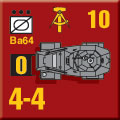 The standard East German “police” platoon follows the same organization as the Soviet Army’s rifle platoon, but its cast-off weaponry gives it a lower rating than the Soviet piece. Likewise, the heavy machine guns should be similar to the Soviet Army’s platoon, but they are operating former German machine guns that the Soviets have already picked over and discarded. The standard East German “police” platoon follows the same organization as the Soviet Army’s rifle platoon, but its cast-off weaponry gives it a lower rating than the Soviet piece. Likewise, the heavy machine guns should be similar to the Soviet Army’s platoon, but they are operating former German machine guns that the Soviets have already picked over and discarded.
The small East German armored force operates the T-34/76; it would not receive the more modern T-34/85 for some years. While in its last years the National People’s Army would be seen as the model of Warsaw Pact forces and most reliable in case of war with the West, in its first months the Soviets clearly took care to make sure their own forces still easily outgunned the re-armed Germans no matter how deep their seeming loyalty to the cause. To overawe striking workers, the older tanks would serve just as well as the most modern vehicles.
Likewise, the Ba64 armored car and SU76 self-propelled gun could intimidate protestors just like a real tank. While no longer front-line vehicles with the Soviet Army, both were issued to Soviet allies in some numbers and saw action in the Korean War with the North Korean People’s Army.
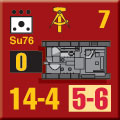 In an actual war in 1950, the Action Police would have been of limited value on the battlefield, but would have freed two divisions’ worth of troops from security duties guarding bridges, rail lines and other key points in the midst of a population the Soviets did not trust. They would become the “garrison police” in 1952 and finally in 1956 would be reorganized as the National People’s Army. But that’s a tale for another day, and another game system. In an actual war in 1950, the Action Police would have been of limited value on the battlefield, but would have freed two divisions’ worth of troops from security duties guarding bridges, rail lines and other key points in the midst of a population the Soviets did not trust. They would become the “garrison police” in 1952 and finally in 1956 would be reorganized as the National People’s Army. But that’s a tale for another day, and another game system.
The National People's Army expansion set is free to Gold Club members.
Click here to join the Gold Club right now!
Sign up for our newsletter right here. Your info will never be sold or transferred; we'll just use it to update you on new games and new offers.
Mike Bennighof is president of Avalanche Press and holds a doctorate in history from Emory University. A Fulbright Scholar and NASA Journalist in Space finalist, he has published a great many books, games and articles on historical subjects; people are saying that some of them are actually good.
He lives in Birmingham, Alabama with his wife, three children, and his Iron Dog, Leopold.
Want to keep Daily Content free of third-party ads? You can send us some love (and cash) through this link right here.
|
